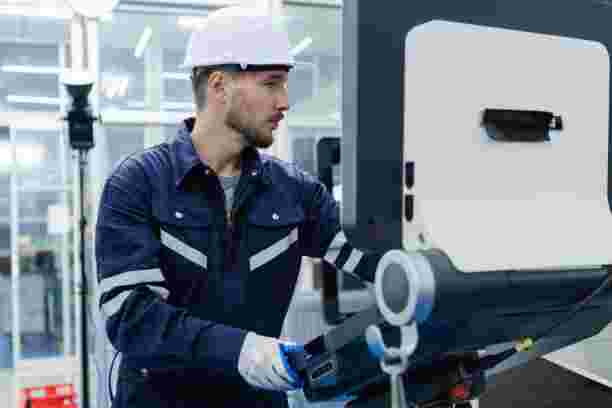The manufacturing industry is evolving rapidly, driven by the demand for higher precision, efficiency, and consistency. One of the most transformative technologies shaping this evolution is robotic CNC machining services. By integrating robotics with computer numerical control (CNC) systems, manufacturers across various industries can achieve unmatched accuracy, reduced lead times, and optimized production processes.
What Are Robotic CNC Machining Services?
Robotic CNC machining services combine two powerful technologies—robotics and CNC machining. CNC machining is a subtractive manufacturing process that uses computer-controlled machines to remove material from a workpiece, resulting in highly precise components. When paired with robotics, CNC machines can be programmed to perform complex tasks autonomously, including loading and unloading materials, quality inspection, and multi-axis machining.
These services enhance automation by removing the need for manual intervention, reducing errors, and increasing overall efficiency. Robots work tirelessly and consistently, maintaining high accuracy in repetitive tasks and operating in challenging environments unsuitable for humans.
Key Components of Robotic CNC Systems
1. Industrial Robots
These robotic arms are programmable and versatile, capable of handling materials, assembling components, and manipulating tools with exceptional precision. Their flexibility allows integration with various CNC machines, including lathes, mills, and grinders.
2. CNC Machines
The backbone of machining operations, CNC systems translate digital instructions (G-code) into physical movements. With multiple axis control (up to 5 or more), CNC machines can create highly complex parts with tight tolerances.
3. Machine Vision and Sensors
To ensure quality and consistency, machine vision systems and sensors are integrated into robotic CNC setups. These components help detect defects, measure dimensions, and verify correct positioning in real time.
4. Software Integration
Software platforms control the entire workflow, from CAD/CAM design to tool path generation and robotic coordination. This ensures seamless communication between robots and CNC machines for uninterrupted manufacturing cycles.
Advantages of Robotic CNC Machining Services
Increased Productivity
Robotic systems operate continuously without fatigue, enabling 24/7 production cycles. This significantly increases output and meets high-volume demands without compromising quality.
Superior Accuracy and Repeatability
Robotic CNC systems offer micrometer-level accuracy and can reproduce exact dimensions across hundreds or thousands of units, ideal for industries like aerospace, automotive, and medical devices.
Reduced Labor Costs
Automation eliminates the need for manual operators for repetitive tasks, freeing up skilled labor for higher-value operations like quality control, programming, and maintenance.
Enhanced Safety
Robots can function in hazardous or high-temperature environments, reducing human exposure to risks and improving workplace safety standards.
Greater Flexibility
Modern robotic systems can be reprogrammed to accommodate different tasks, product lines, or materials, making them ideal for both small-batch custom jobs and large-scale production.
Industries Benefiting from Robotic CNC Machining
Aerospace
Aerospace components demand extreme precision and reliability. Robotic CNC services help maintain these standards while scaling production for large assemblies and intricate parts.
Automotive
From prototyping to mass production of engine components, gear systems, and body parts, robotic CNC machining ensures uniformity and efficiency in automotive manufacturing.
Medical
Medical device manufacturing requires cleanroom conditions and exact tolerances. Robotic CNC machines can produce implants, surgical tools, and equipment with the required hygiene and accuracy.
Electronics
The electronics sector benefits from precise machining of components like housings, connectors, and heat sinks, which require both micro-machining and speed—two hallmarks of robotic CNC integration.
Robotics & Automation
Interestingly, robotic CNC machining also plays a vital role in building robotic systems themselves—producing structural frames, gears, and housing parts for the next generation of smart machines.
Common Applications of Robotic CNC Machining
-
High-speed milling of complex geometries
-
Precision drilling and boring operations
-
Automated deburring, grinding, and polishing
-
Tool and die making for injection molding
-
Fabrication of jigs, fixtures, and custom tooling
The Role of MYT Machining in Robotic CNC Services
MYT Machining stands at the forefront of integrating robotic automation with CNC precision to deliver end-to-end machining solutions. With expertise across multiple industries and a commitment to quality, MYT Machining offers advanced robotic CNC machining services that cater to the unique requirements of each project—whether it's prototyping or full-scale production.
From programming multi-axis robotic arms to ensuring dimensional accuracy with in-line inspection, MYT leverages the latest technology to provide consistent results and minimize downtime.
How to Choose the Right Robotic CNC Service Provider
When selecting a service partner for robotic CNC machining, consider the following:
-
Experience and Technical Capability: Evaluate the provider’s experience with robotics and CNC systems, particularly in your industry.
-
Certifications and Compliance: Look for ISO certifications and adherence to industry-specific standards.
-
Material Expertise: Ensure the provider can work with a wide range of materials, from metals like aluminum and titanium to plastics and composites.
-
Turnaround Time: Fast lead times are essential for meeting production deadlines and market demand.
-
Customization and Support: A reliable provider should offer customized solutions and responsive support throughout the project lifecycle.
Future Trends in Robotic CNC Machining
As Industry 4.0 continues to reshape manufacturing, robotic CNC machining will see further integration with:
-
Artificial Intelligence (AI): For predictive maintenance and smarter process control
-
Digital Twins: Simulating machining processes virtually to reduce prototyping costs
-
Cloud-Based Monitoring: Real-time tracking of production metrics from anywhere
-
Collaborative Robots (Cobots): Safely working alongside humans for hybrid manufacturing environments
These trends promise greater agility, lower costs, and smarter automation, ensuring that robotic CNC services remain vital to the future of industrial production.
Conclusion
Robotic CNC machining services are redefining the boundaries of precision manufacturing. By fusing the strengths of robotics with the proven accuracy of CNC machining, companies can boost productivity, lower costs, and meet increasingly stringent quality requirements. Whether you're in aerospace, automotive, or medical manufacturing, leveraging robotic CNC technology will give you a distinct competitive edge.




